Urban pollinator gardens are a way to help build local ecosystems and support the biodiversity that is abundantly found within them. By definition, ecosystems are geographical areas where organisms (both living and nonliving) work together to create a communicable, living environment. In other words, plants, animals, insects, weather, temperature, soil, water, etc…, all work together and develop into a potentially sustainable “bubble of life”.
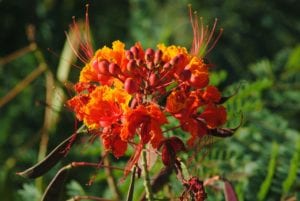
(Pride of Barbados…hummingbird magnet)
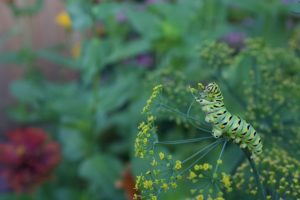

(Fennel with Swallowtail caterpillar)
Why the Need for Urban Pollinator Gardens?
There is no doubt that San Antonio is growing, and it is continuing to grow fast! With each new building built, or asphalt road laid, our local pollinators are eked out just a little bit more. Urban pollinator gardens help to reestablish pollinator plants that have been depleted in cities full of concrete sidewalks and industrial buildings. These gardens help to restore the local habitats of our native and local pollinators, which in turn will help preserve nature, maintain vital food supplies, and much more. (Did you know pollinators are responsible for one out of every three bites of food you eat?)
Not only do urban pollinator gardens make our otherwise drab cityscape look fabulous with lush foliage and colorful, vibrant blooms, they also create a crucial, protective habitat for travel-weary bees and butterflies looking for sustenance to continue their incredible journeys. Couldn’t you plant a flower or two to help out?
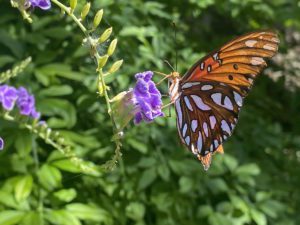

(Gulf Fritillary butterfly on Duranta)


(Busy and happy bees on Mystic Spires salvia)
How to Create an Urban Pollinator Garden
You don’t have to have acre upon acre to support our local and native pollinators; that’s the beauty of an urban pollinator garden. Pollinators don’t seem to be phased by city life when they have welcoming patches of nectar-rich flowers to visit! You can create a thriving ecosystem in your own landscapes no matter what size you have available. Patios, balconies, decks and rooftops, with assorted pots full of pollinator-friendly plants, can all be a designated area to support a bevy of bees, butterflies, hummingbirds, moths, and more.
Fill up your urban pollinator garden with nectar-rich plant selections that will be sure to bring in a bevy of butterflies, bees, hummingbirds, and moths. Pollinator plants that go to seed are also attractive to local birds. For some great plant options, check out the list of plants below that will be utilized in the Legacy Park Urban Pollinator Gardens in San Antonio. Access the links below for an in depth look at each of these pollinator friendly plants. Important growing information can be found there for success in growing these urban pollinator plants in your own landscapes and container gardens. For a quick look and easy-to-reference guide, see this link.
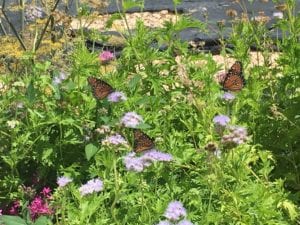

(Pollinators cannot resist the nectar in the profusely blooming Gregg’s Blue Mistflower.)
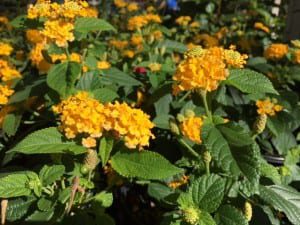

New Gold™ lantana is a sterilized, non-invasive pollinator plant.


How can I get these 6 pollinator plants and what’s the cost
Hi Peggy,
If you are local, we carry these plants at Rainbow Gardens, and we currently have them in stock at our Bandera location. If you shop at our Thousand Oaks location I can look into inventory there. However, during spring, our inventory changes daily as many people are shopping so it’s best to check the day you plan to visit to make sure we still have a supply of them.
Cost of plants will vary depending on what size container you are looking to purchase. I can give you a range, as we usually carry multiple sizes between:
Duranta 8.99 – 21.99
Pride of Barbados 9.99 (1 gallon)
New Gold Lantana 3.99 – 21.99
mystic Blue Spires 8.99 – 21.99
Gregg’s Blue Mist 6.99 – 8.99
Fennel 3.99
I’m not good online how do I get to thousand oaks and if it’s not near they be shipped?
Here are the addresses for our Rainbow Gardens locations:
2585 Thousand Oaks
San Antonio, TX 78232
(210) 494-6131
8516 Bandera Road
San Antonio, TX 78250
(210) 680-2394
We do not currently have the ability to ship plants.